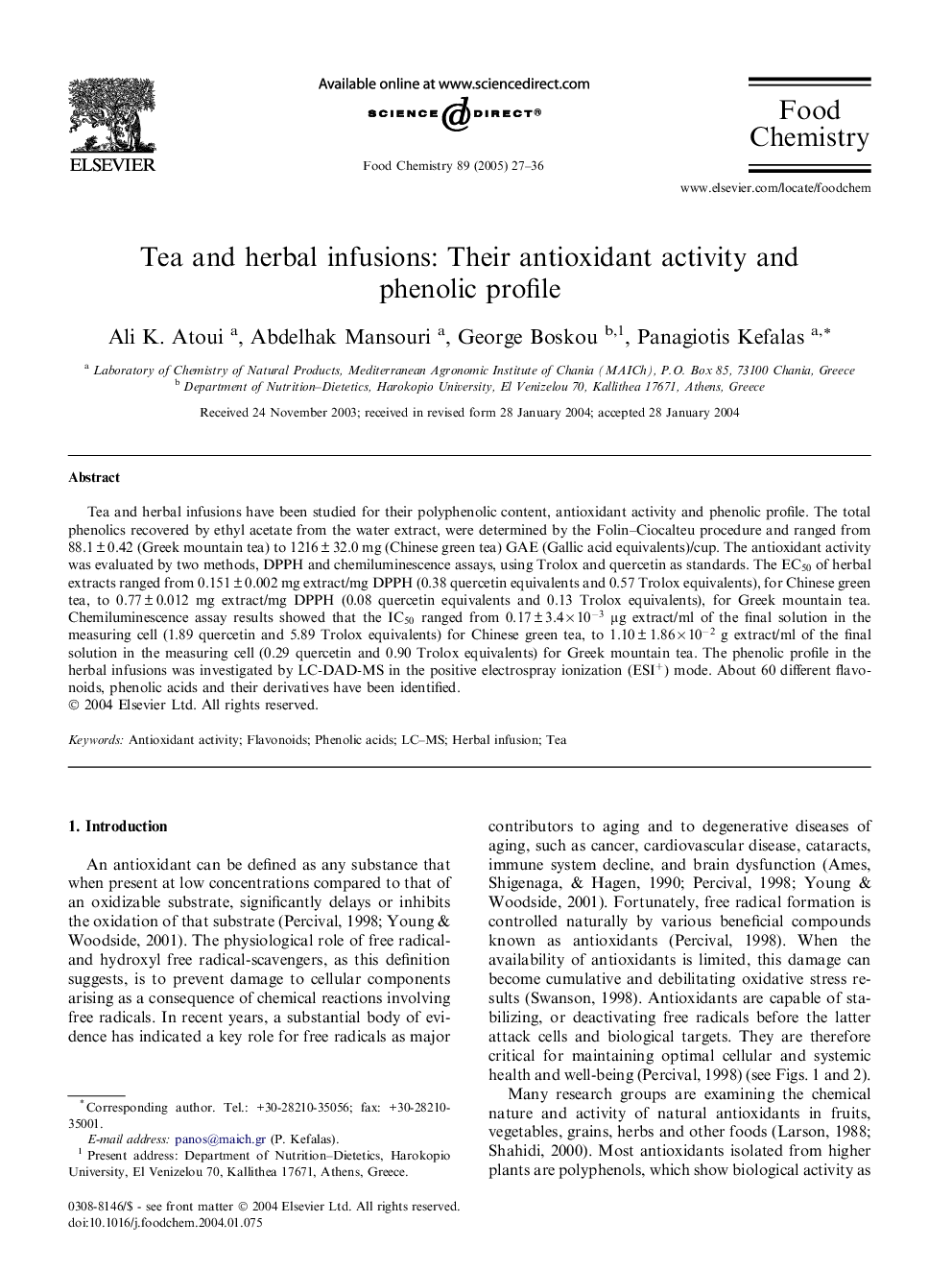| Article ID | Journal | Published Year | Pages | File Type |
|---|---|---|---|---|
| 10544096 | Food Chemistry | 2005 | 10 Pages |
Abstract
Tea and herbal infusions have been studied for their polyphenolic content, antioxidant activity and phenolic profile. The total phenolics recovered by ethyl acetate from the water extract, were determined by the Folin-Ciocalteu procedure and ranged from 88.1 ± 0.42 (Greek mountain tea) to 1216 ± 32.0 mg (Chinese green tea) GAE (Gallic acid equivalents)/cup. The antioxidant activity was evaluated by two methods, DPPH and chemiluminescence assays, using Trolox and quercetin as standards. The EC50 of herbal extracts ranged from 0.151 ± 0.002 mg extract/mg DPPH (0.38 quercetin equivalents and 0.57 Trolox equivalents), for Chinese green tea, to 0.77 ± 0.012 mg extract/mg DPPH (0.08 quercetin equivalents and 0.13 Trolox equivalents), for Greek mountain tea. Chemiluminescence assay results showed that the IC50 ranged from 0.17 ± 3.4 Ã 10â3 μg extract/ml of the final solution in the measuring cell (1.89 quercetin and 5.89 Trolox equivalents) for Chinese green tea, to 1.10 ± 1.86 Ã 10â2 g extract/ml of the final solution in the measuring cell (0.29 quercetin and 0.90 Trolox equivalents) for Greek mountain tea. The phenolic profile in the herbal infusions was investigated by LC-DAD-MS in the positive electrospray ionization (ESI+) mode. About 60 different flavonoids, phenolic acids and their derivatives have been identified.
Related Topics
Physical Sciences and Engineering
Chemistry
Analytical Chemistry
Authors
Ali K. Atoui, Abdelhak Mansouri, George Boskou, Panagiotis Kefalas,
